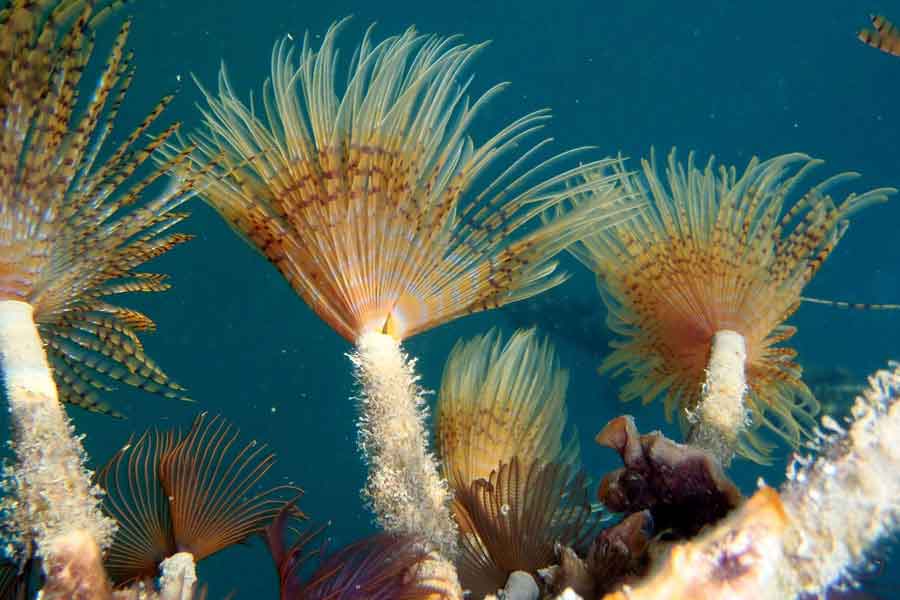
Just like earthworms, marine worms construct tube-shaped burrows that are more or less curved, consuming the sand and mud that they pass through their intestines to extract the food they contain. They are essential fertilizing agents both on land and in the marine environment.
Terrestrial worms can only obtain food from the substrate, so exposure to air outside their burrows is not only dangerous due to predators but also completely useless. However, in the sea, outside their burrows, the water carries billions of proteins in the form of plant and animal plankton. Letting such valuable food pass by without utilizing it would be imprudent. That is why marine tube worms have undergone truly remarkable adaptations.
While they also dig into the substrate to obtain the food it may contain, the front part of their body features a colorful gill plume that extends outside the sand’s surface like a beautiful flower a few centimeters in diameter. These plumes serve a dual function: they act as gills, allowing the worm to extract oxygen from the water, and at the same time, they function as fishing nets where the plankton is captured by numerous cilia that act as tiny sticky hairs, adhering the plankton that is then sent directly to the worm’s stomach.
Undoubtedly, this exposure of the small and coveted animal to the outside world could be tempting to predators. However, if the worm feels threatened, the plume retracts and withdraws into the burrow in just a fraction of a second. The compacted plume, now constrained by the narrowness of the tiny cave, becomes a kind of plug that keeps predators away from the homeowner, who remains safe several centimeters below the surface.
Recently, an interactive group from NASA and the University of Delaware initiated studies on hydrothermal vents in the North Pacific where the Pompeii tube worm (Alvinella pompejana) lives. This worm withstands pressures 250 times greater than atmospheric pressure and thrives in waters up to 90°C, literally boiling water. This small worm holds the world record for heat resistance. These studies on life in extreme conditions are expected to help NASA astrobiologists understand the possibilities of life on other planets in our solar system.
It is astonishing to appreciate that in the most extreme conditions of cold or heat, under incredible pressures and in clearly hostile environments where we thought no living being could survive, we turn over a stone and are surprised to see life flowing, inexorable and beautiful, defying reason and human understanding.
«You cannot protect what you do not love, and you cannot love what you do not know.»

